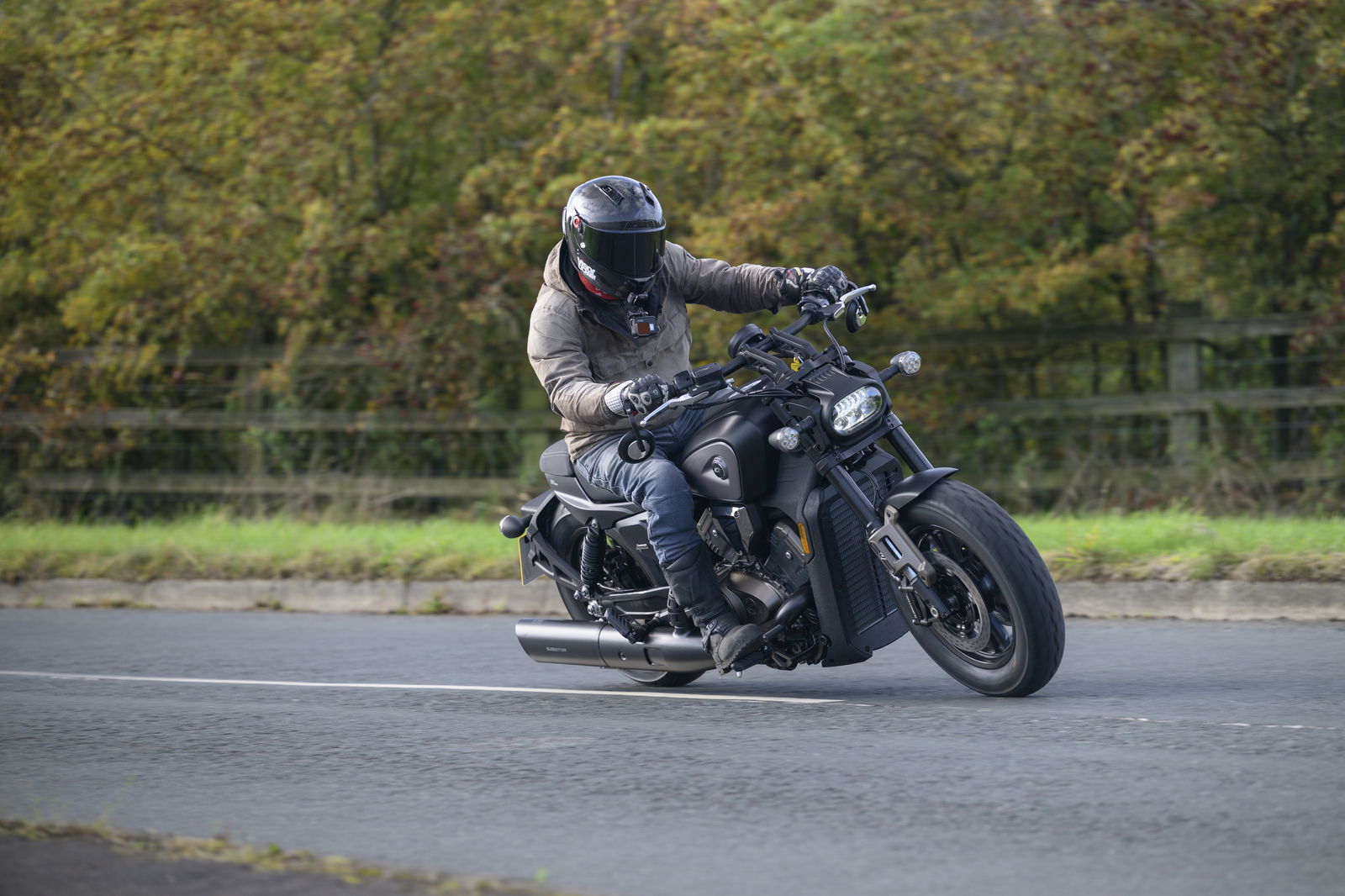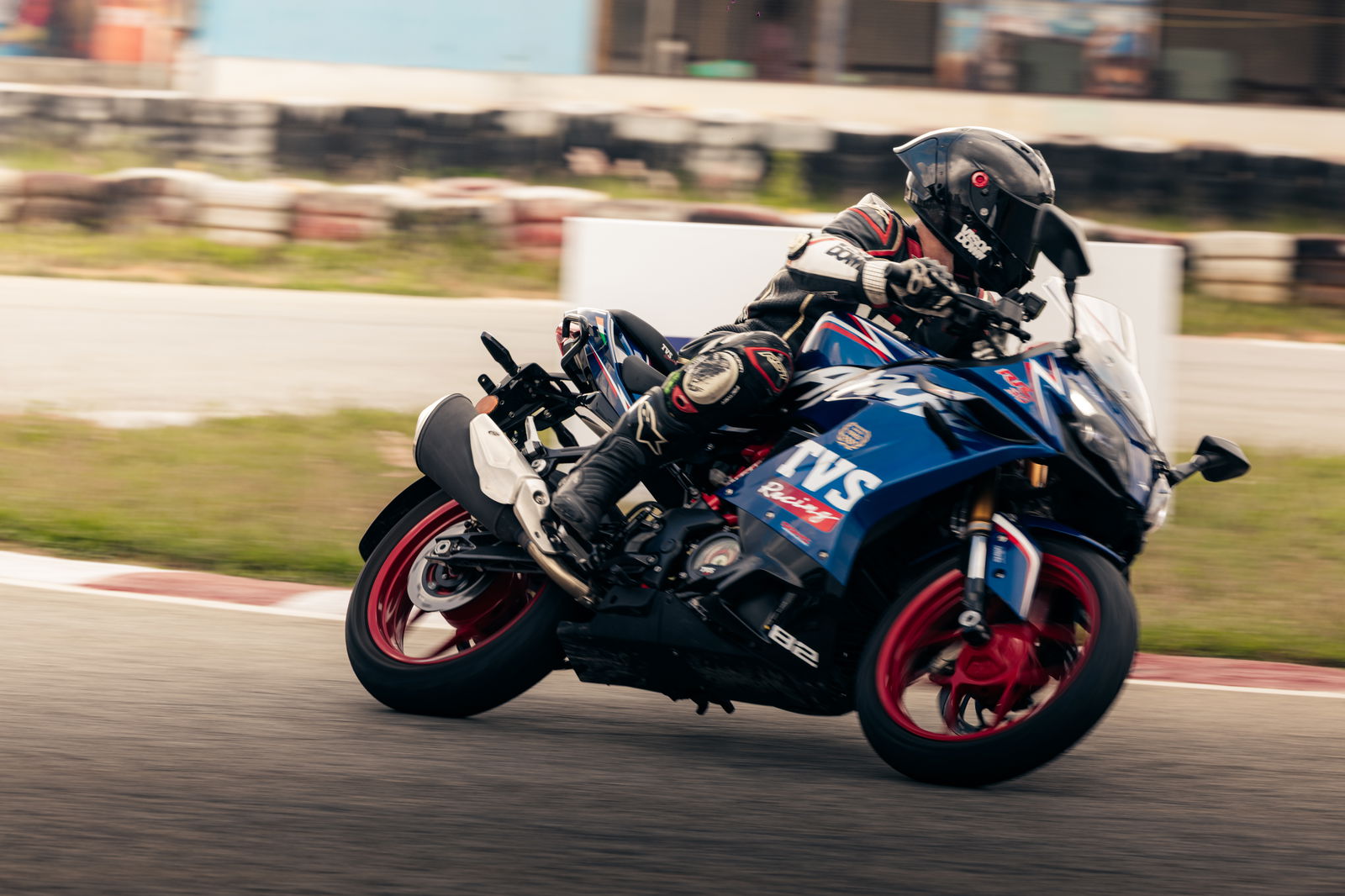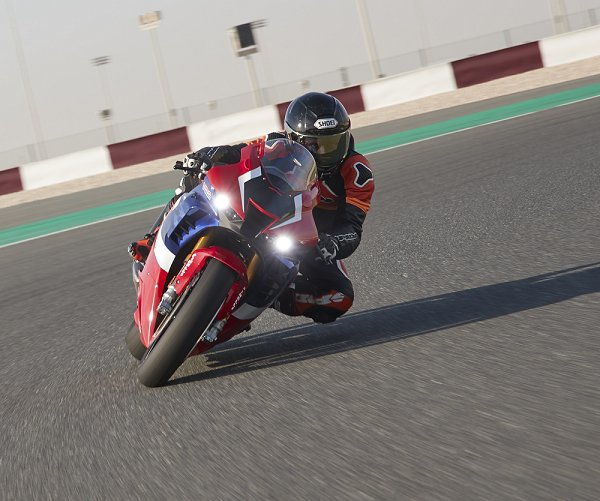TVS Apache RTR 310 review: UK-bound A2 naked tested
Packed with tech, aggressive styling, and a tried and tested engine, does the TVS Apache RTR 310 has what it takes to hold its own in the UK?
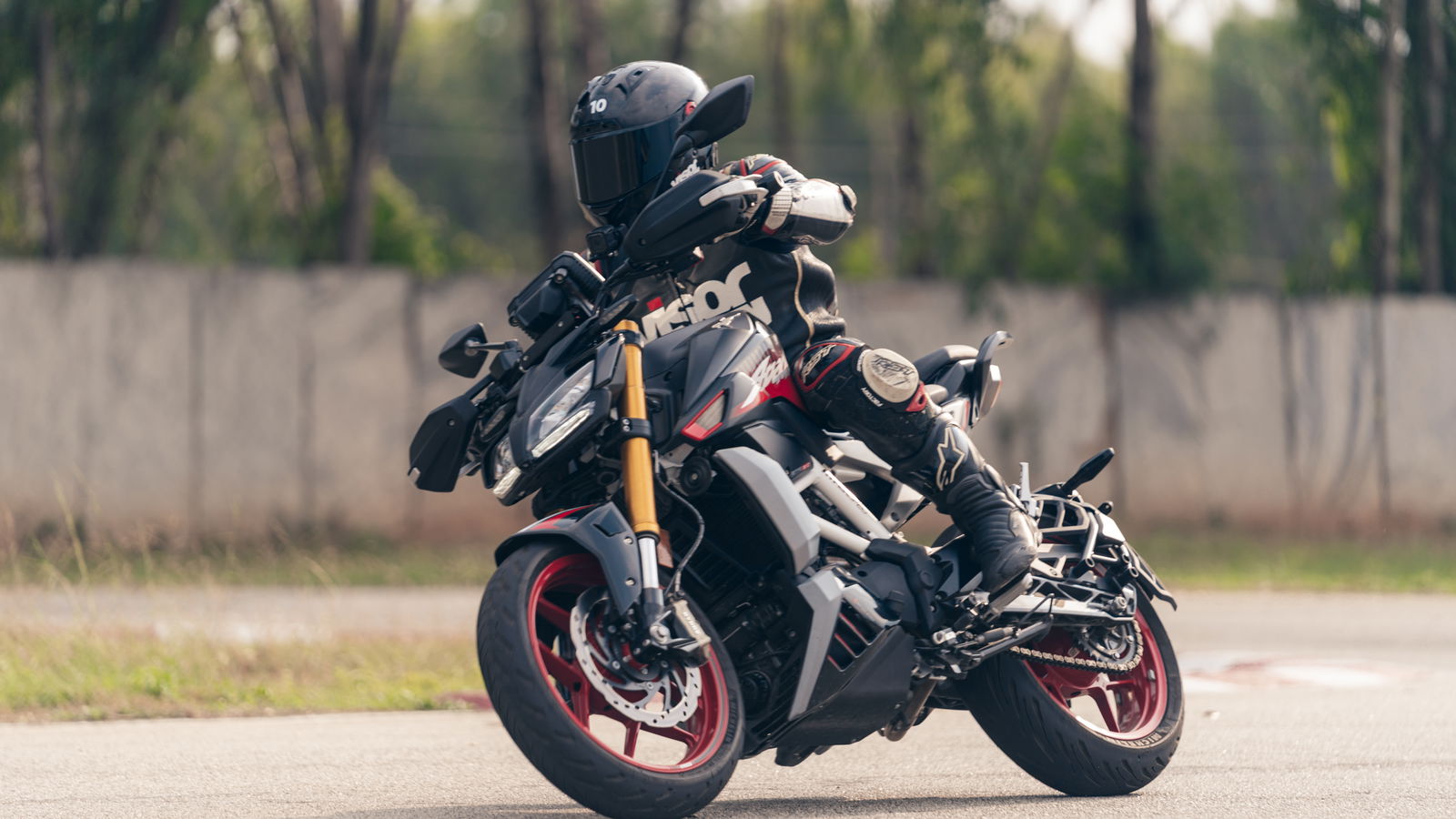
* Good quality chassis equipment
* Torquey engine
* Rear preload soft on standard settings
* Traction control can be intrusive
Of all the A2 bike types in the UK, it’s naked and adventure bikes that continually post the best sales results. Because of this, it’s no surprise to hear that the TVS Apache RTR 310 is one of the first bikes the Indian brand will be bringing to the UK when it lands here later this year.
To get a taste of the bike, I flew out to Bengaluru to ride the RTR and RR versions of the Apache 310 range. The venue was Meco Kartopia, a 1,200-metre outdoor track, which the sat nav showed as being just 30 miles from our hotel. After a nearly four-hour drive across the city, we eventually arrived at the venue, with the time taken to get there only serving to highlight how important motorcycles and scooters are to the Indian nation.
These are not just playthings for those looking for a status symbol or an adrenaline fix. For the majority of riders in India, bikes are the only way to ensure they can get somewhere even vaguely on time.
Tech and spec
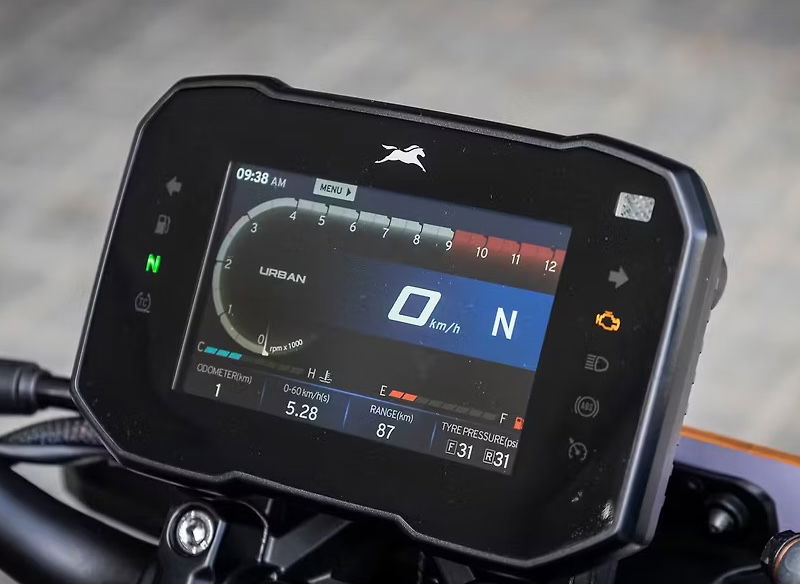
Like the RR 310 we also tested on this event, the RTR comes with a level of tech and standard kit that you simply don’t get from any of the established European and Japanese competition.
The headline tech is an IMU, meaning full cornering ABS (from Bosch, no less) and lean-sensitive traction control, a ride-by-wire throttle and riding modes. On top of that you get wheelie control, rear lift control, launch control and a Bluetooth-connected TFT dash. Mechanically, you get some help from a quickshifter (up and down) as well as cruise control and a climate-controlled seat. It even has a clear clutch cover that adds some bling.
The engine
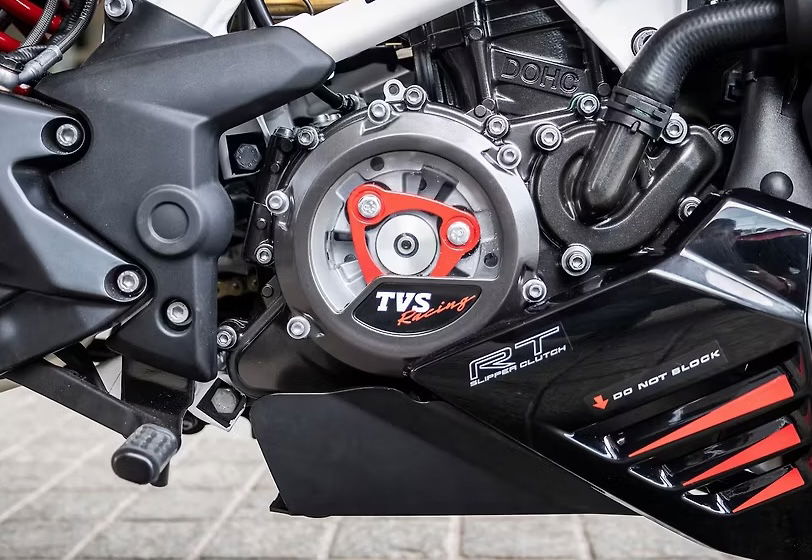
With TVS handling the production of BMW’s soon-to-be-replaced 310 range, it’s no surprise to find that the 312.2cc single has a distinctly European feel to it. In RTR trim, it boasts 35.1 bhp at 9,700 rpm and 21 lb ft at 6,650rpm. Unlike its faired sibling, which makes more power at the top of the revs, the RTR is tuned more for torque, both low-end and mid-range. Because of this, it leaps out of the tighter turns with much more urgency than the RR 310. Out of the corners, it’ll leave the RR for dead, and it's only by the end of the next straight that the sportier bike is starting to claw that deficit back. As this is only a 1,200 metre track, made up of numerous extremely tight hairpins, the RTR feels like a much quicker package.
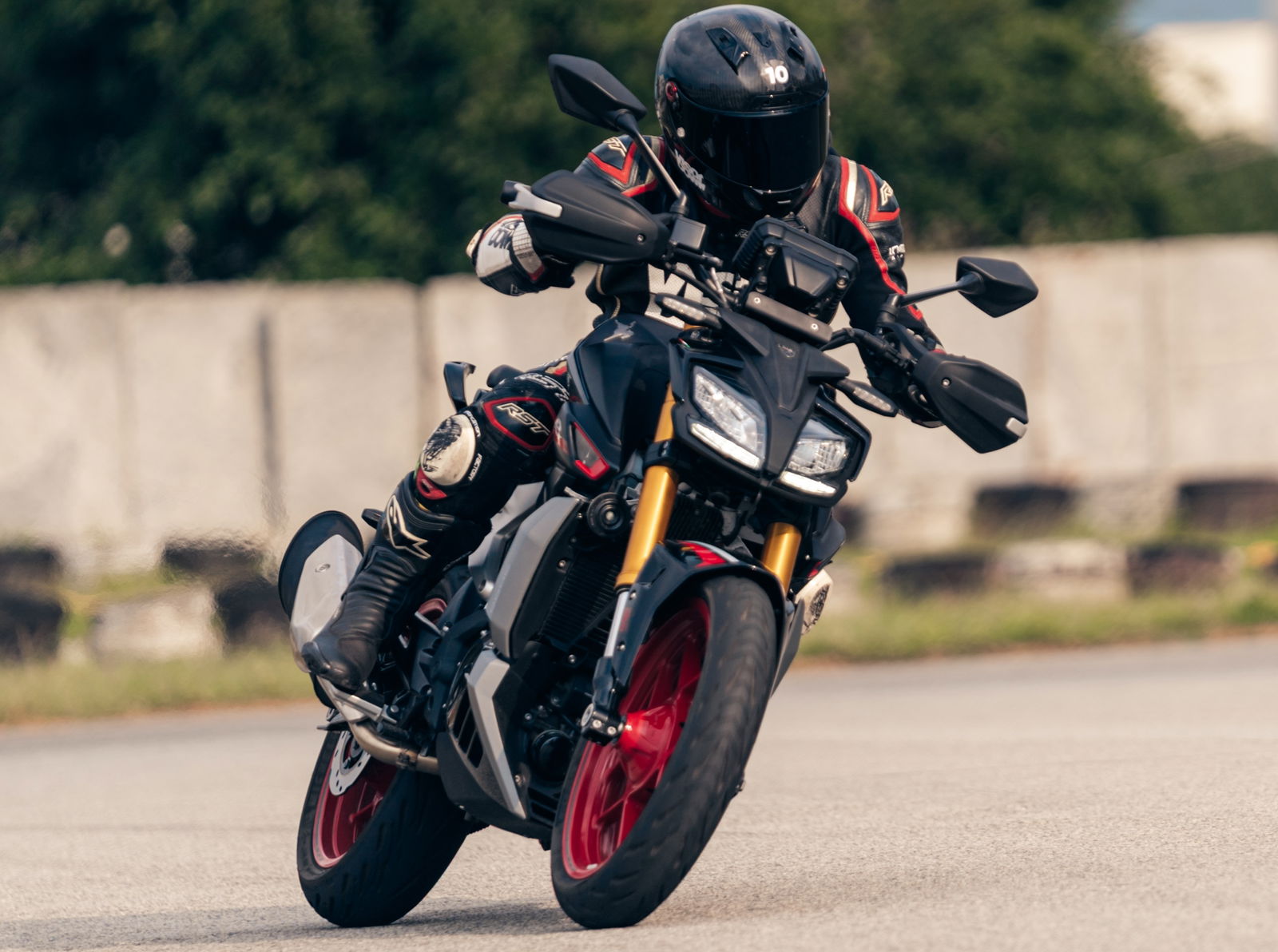
And that point has a real-world effect, too. Riding on the road on a bike like this is more about torque and grunt than anything else. Fast sweepers are hard to come by in this part of the world - unless you are up for a four or five-hour schlep out of the city. For the most part, it’s short, sharp squirts between the traffic that matter, and the RTR ticks that box very nicely.
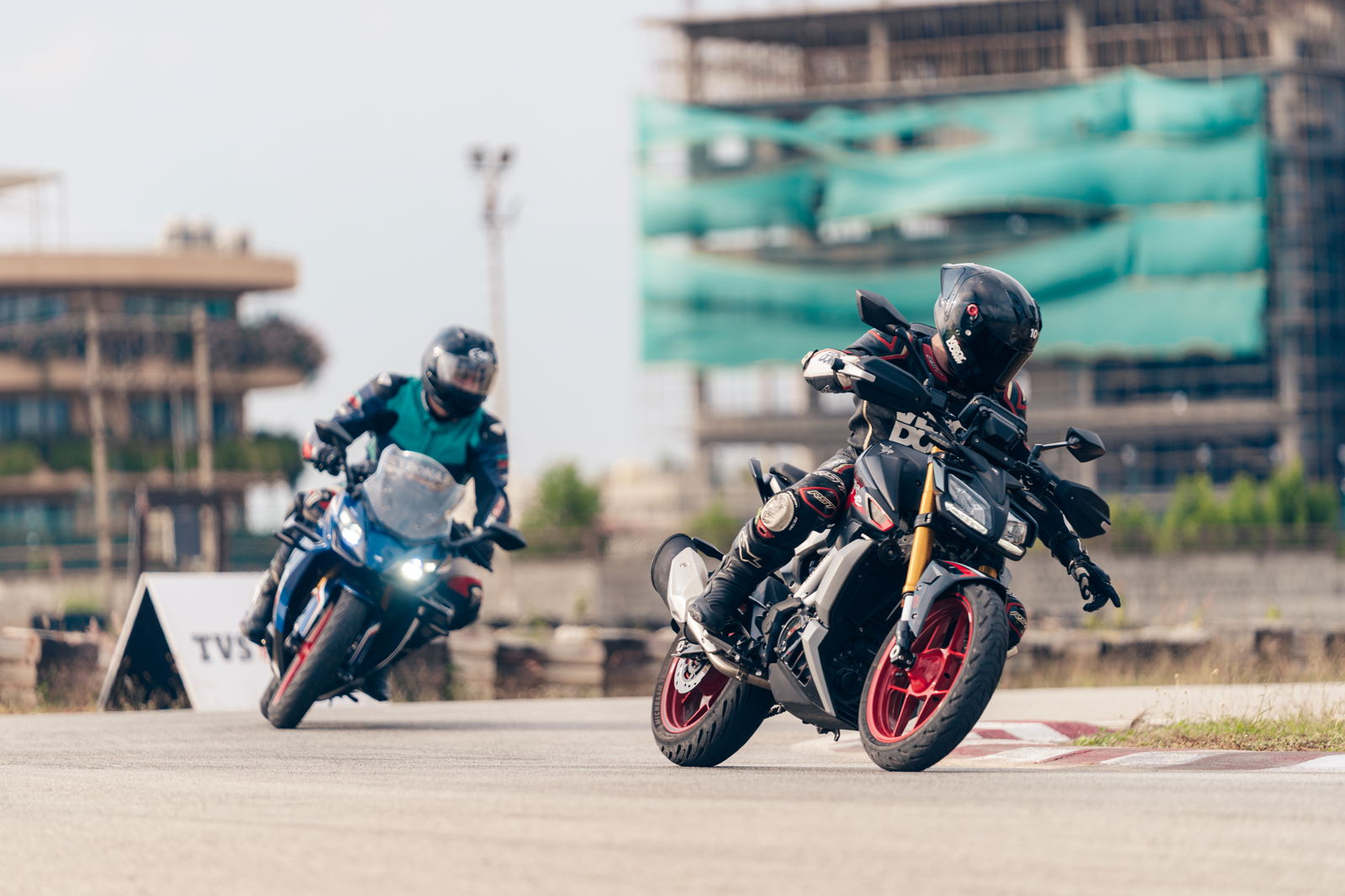
Like the sporty-looking RR, the naked RTR comes equipped with a proper up and down quickshifter, and it works superbly well. Up and down the ‘box, it shifts cleanly, with a precise kill-time and nicely matched revs when coming down the gearbox. The lever feel is nice, with no slack, and the shifter feels direct and accurate. Mated to the gearbox is a slip/assist clutch, which makes for a very light clutch lever and controlled downshifts even when carrying some lean angle.
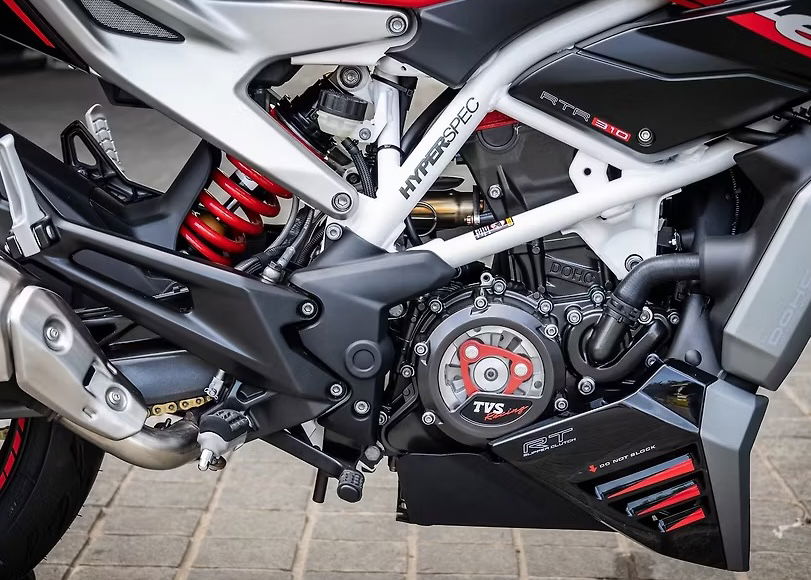
Away from the mechanical stuff, the electronics felt well sorted. The traction control was overly cautious for the track, so I switched that off, and the throttle connection was crisp and direct. Unlike the traction control, the ABS seemed less intrusive, with only the rear ABS chiming in from time to time. The riding modes also make a discernible difference, changing the power output, throttle maps, and traction control settings enough that you can feel the affect.
The handling
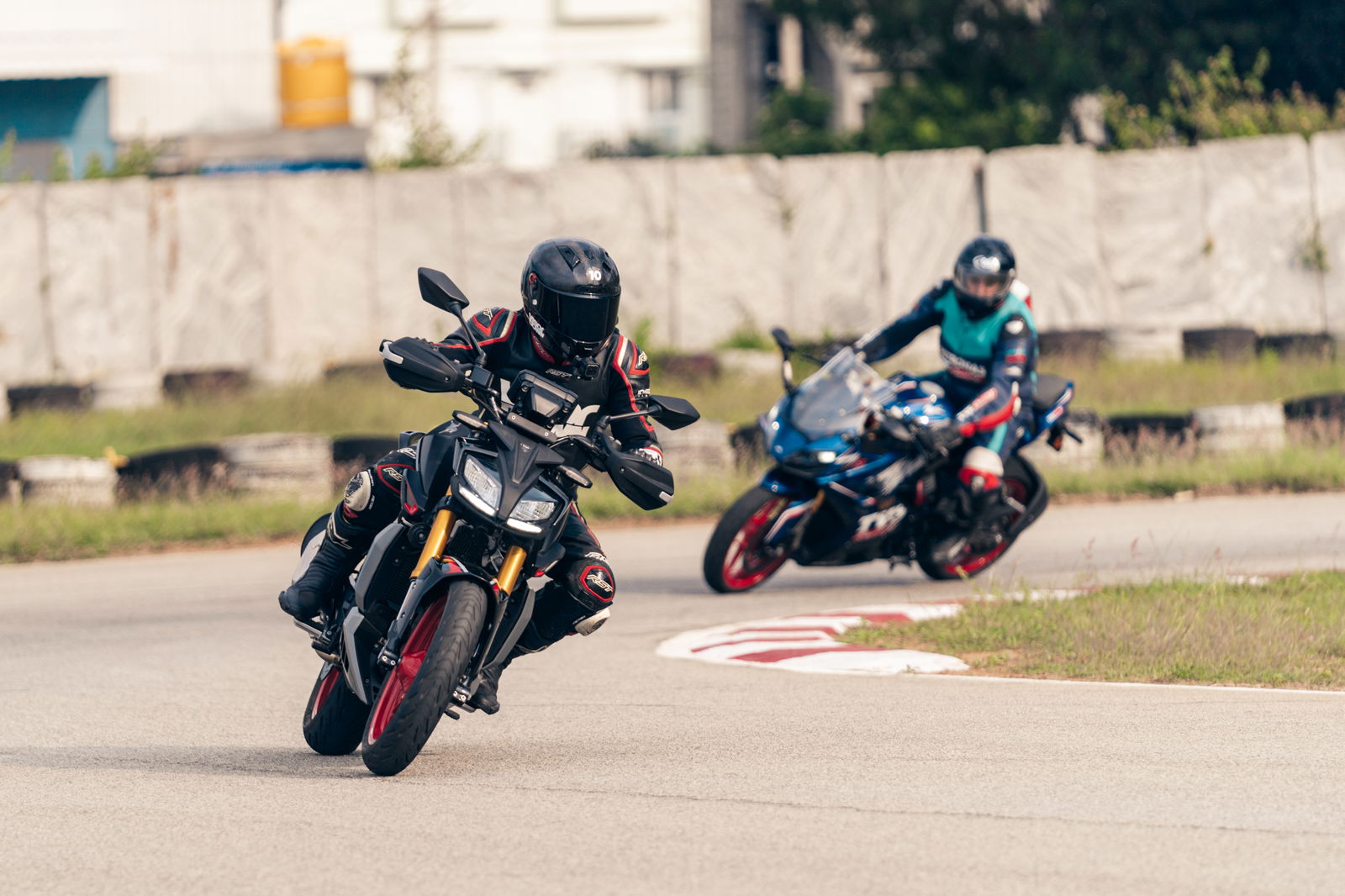
Of the two bikes I rode in this event, the RTR felt the most sorted. It had the benefit of being one of the TVS Built to Order bikes, meaning it gained more trick adjustable suspension. I’m not sure if the base settings are different to the RR, or if the TVS team had fettled the bikes before we hopped on, but it felt much more natural on the track, diving less on the brakes and feeling sharper in the corners. The only change we made on the day was an increase in rear preload, which helped on corner entry and exit, as the bike was squatting less and holding a tighter line on the throttle.
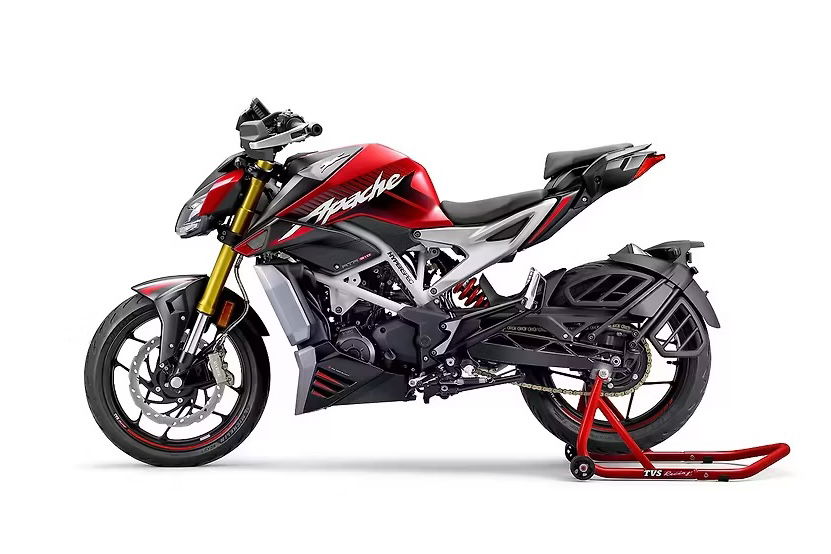
And it’s not just the sportier suspension helping to make the RTR feel like the one to buy; it’s also the riding position. Naked bikes tend to feel like an easier bed fellow on track. You’ve got room to move around and wide bars to cling to, and that’s the same case with the RTR. The pegs deck out without too much effort, but if you hang off like a hero, knee-down cornering action is within reach.
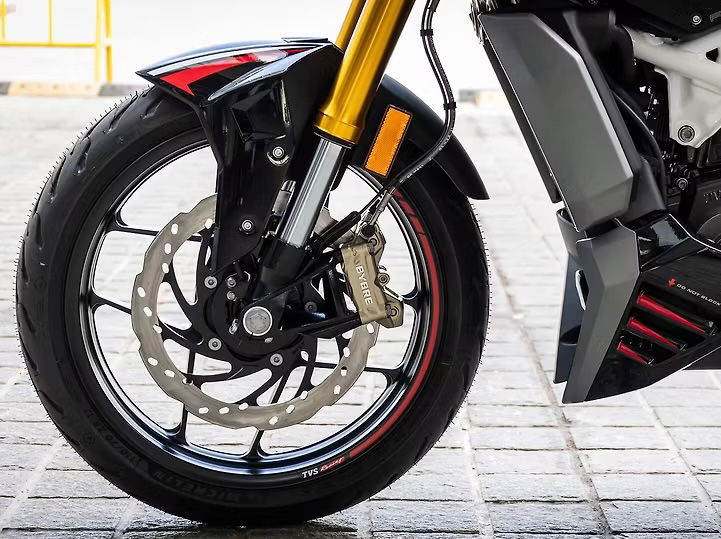
The braking system on the bike comprises hardware from ByBre, and it’s best described as progressive. The lever feel is okay, but there isn’t much in the way of bite from the front, and you have to work the lever hard to get the most out of it. By the end of the afternoon sessions, most of the bikes at the track had levers that were touching the bar and smoking calipers - although I have a feeling most A2 bikes would do that after a day on a go-kart track.
Comfort
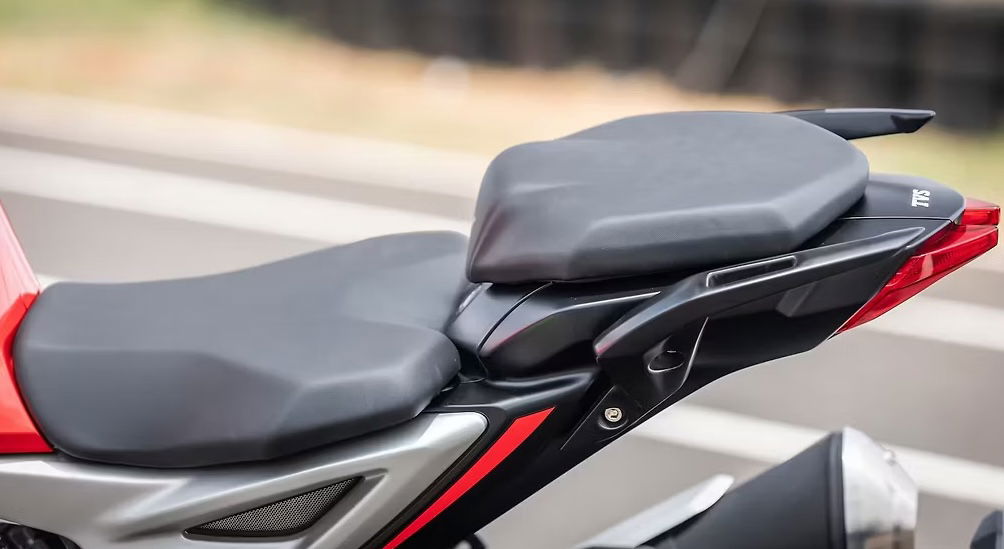
Like any single, there were some vibes to be felt, but on the whole, nothing out of the ordinary. What the RTR does well is provide the rider with a very comfortable and easy-going riding position. The top half of the story is roomy enough for most riders, and while the low-set pegs might have met the track on more than one occasion, that does at least mean it’s as relaxed as it can be. Sure, you have the added bonus of a heated and cooled seat, although at this event we didn’t get a chance to test it. I did try the colling system on another event in Thailand a couple of years ago, although to be honest couldn’t really feel the promised relief!
The verdict
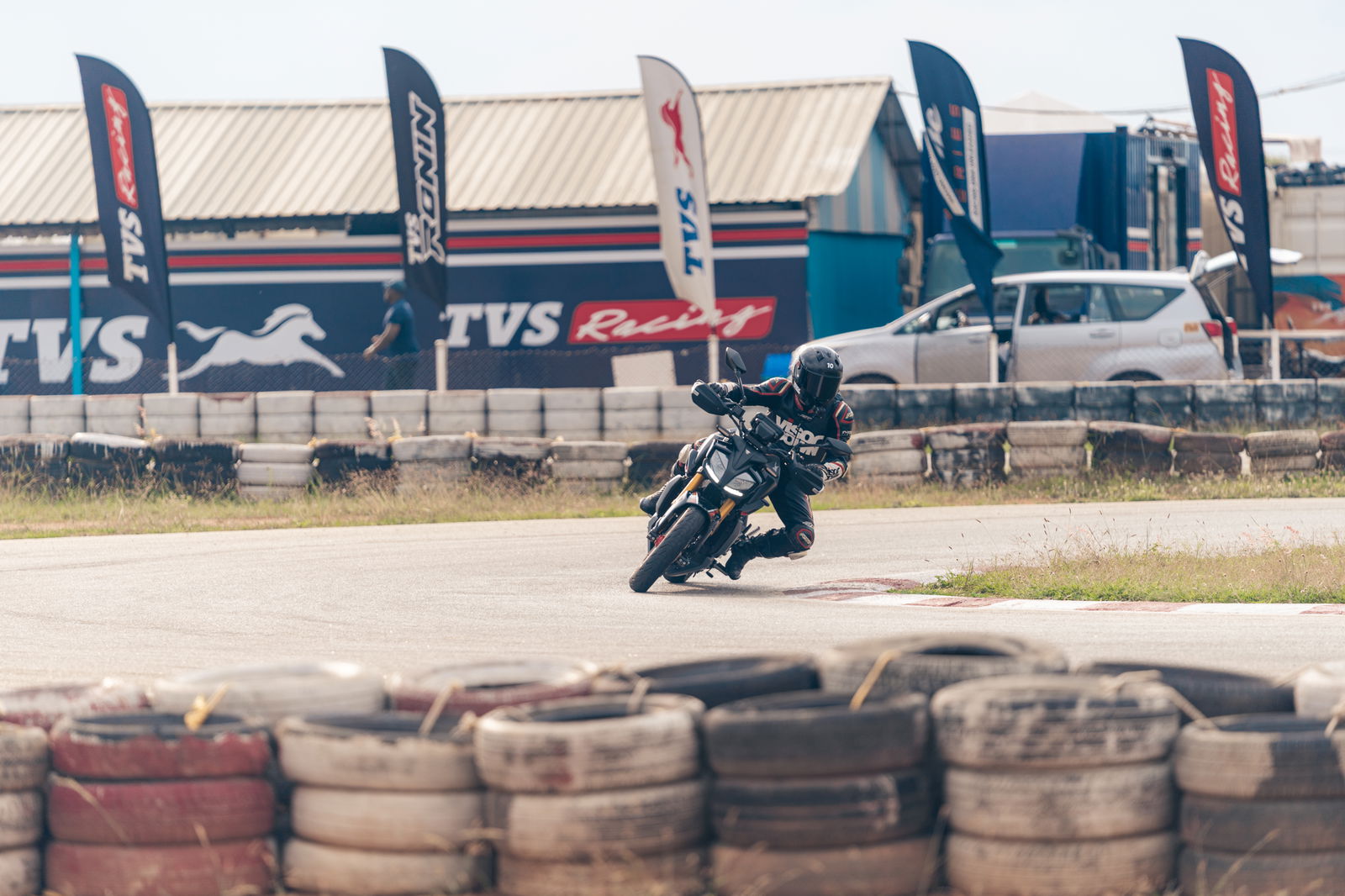
The naked A2 segment in the UK and Europe is quite a busy little space, with big names like Honda, Yamaha, KTM, and now Ducati (with its Streetfighter V2 A2 option), ruling the roost. The breadth of styles and spec levels is as wide as it gets, but the Apache RTR 310 feels like it might find a home.
For UK riders, it’ll likely be the Apache RTR that will be the model to go for, given how familiar its engine and chassis will feel next to the competition. But the trick up its sleeve is the tech it packs as standard, and the potential price you’ll pay for that kit.
Indian brands have always been good at building a bike, flipping it for Western riders and then selling it at a price that is attractive enough to steal sales from the big names. Royal Enfield has become an expert at this, and TVS looks set to follow in its footsteps. In India, the RTR comes in at around £2,000 at today's exchange rate, and while there is no telling what it’ll cost once it does land here, if it’s priced keenly enough, it might just turn some heads.
Of course, there are going to be some that will shy away from any new brand, preferring instead to put their money into a well-known badge on the fuel tank. But there will be early adopters too, and it’s these riders that will be key to spreading the word about this mysterious brand from India.
TVS Apache RTR 310 specs
Engine | Four-stroke, four-valve, single-cylinder, liquid-cooled, reverse-inclined 312.2cc |
Peak power | 35.1 bhp at 9,700 rpm |
Peak torque | 21 lb ft at 6,650 rpm |
Kerb weight | 169 kg kerb |
Fuel capacity | 11 litres |
Seat height | 810 mm |
Front suspension | USD KYB forks (adjustable on Built-to-Order versions) |
Rear suspension | KYB monoshock (adjustable on Built-to-Order versions) |
